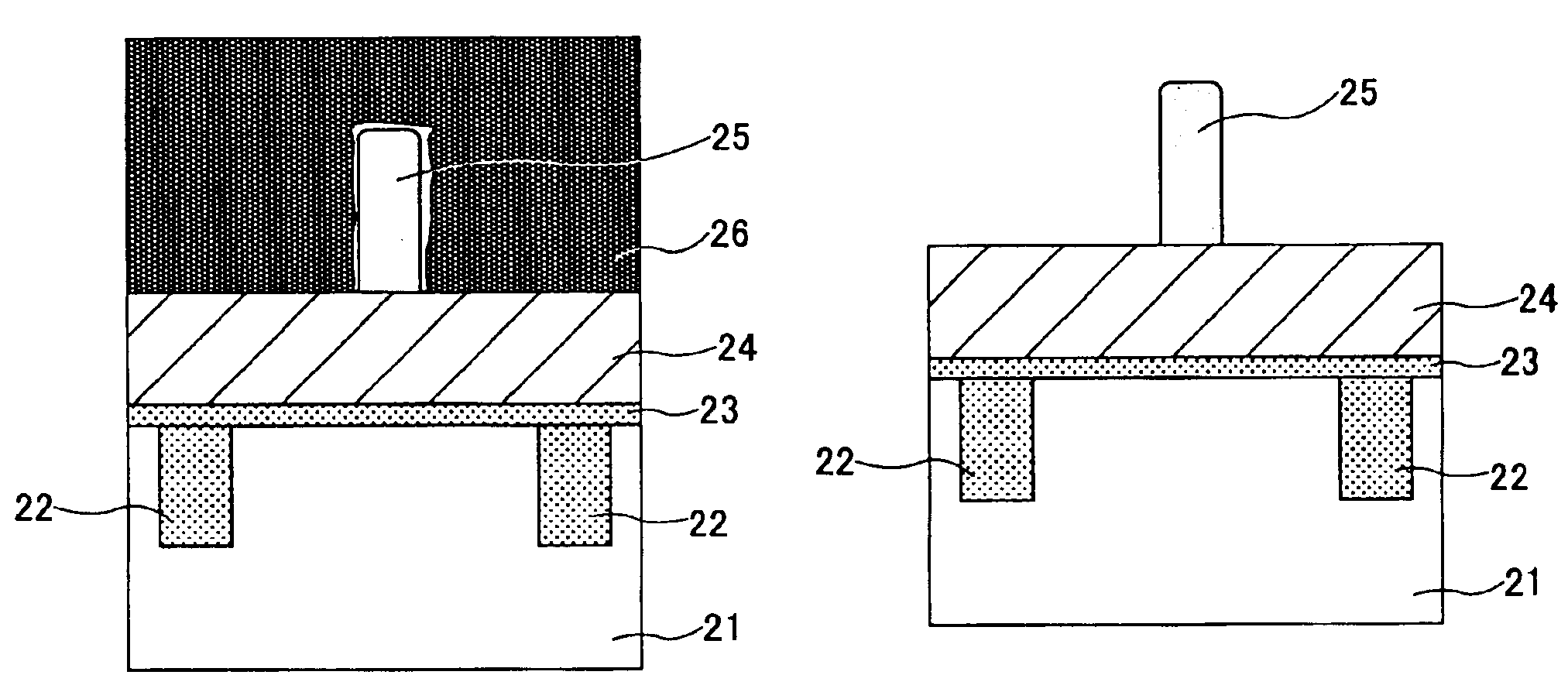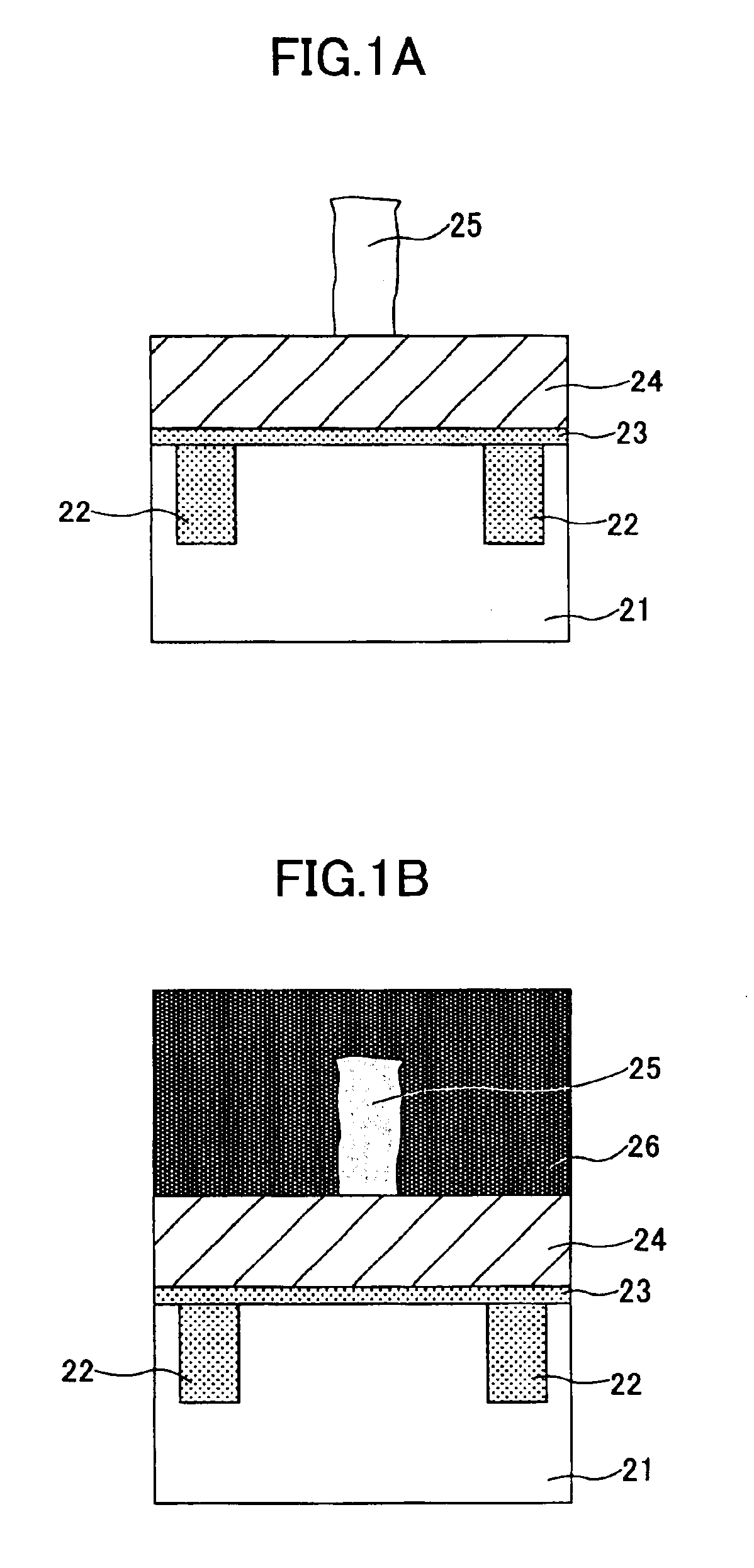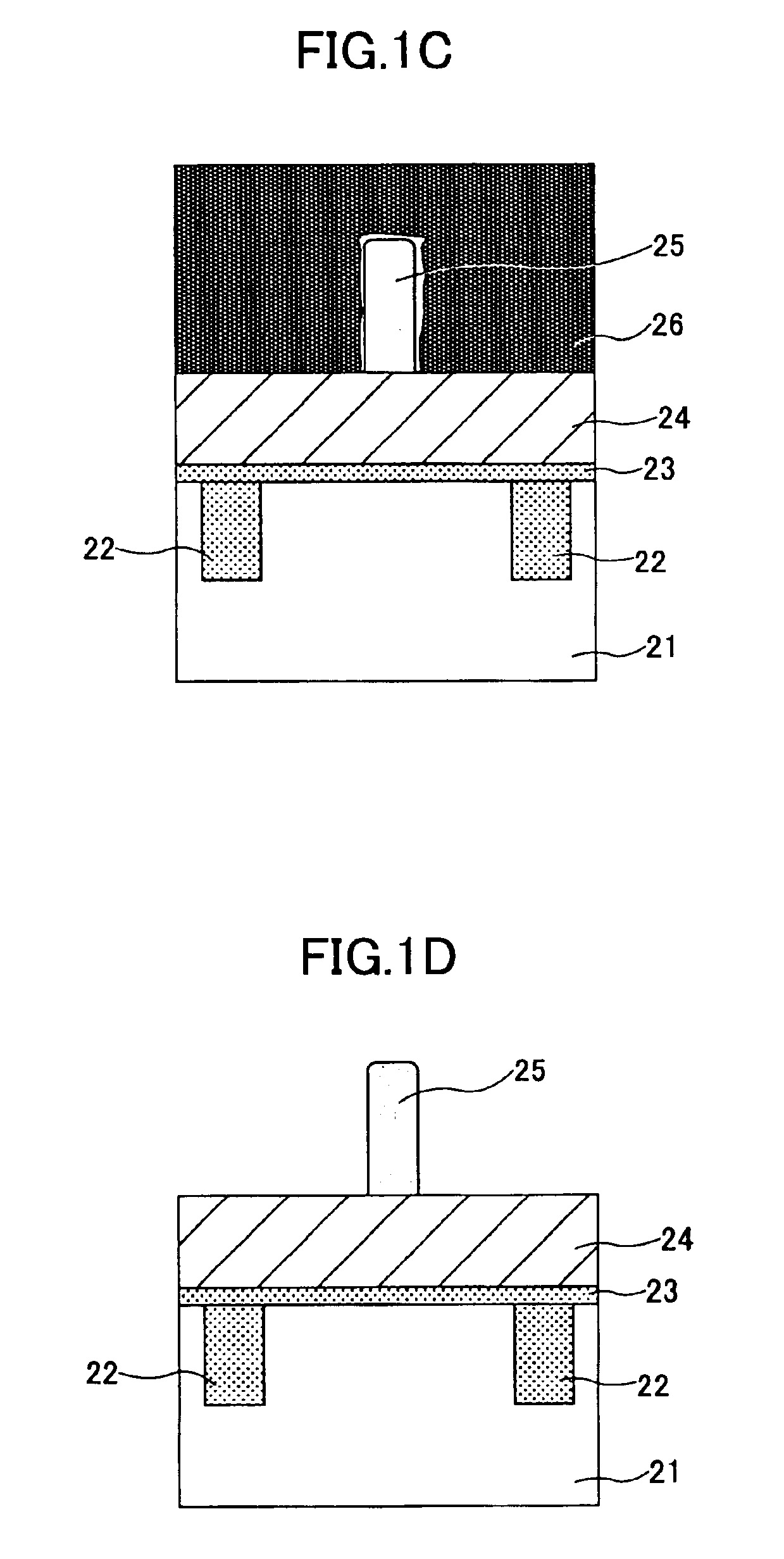Semiconductor apparatus fabrication method forming a resist pattern, a film over the resist, and reflowing the resist
a technology of semiconductor apparatus and resist pattern, applied in the direction of semiconductor devices, electrical apparatus, photosensitive material processing, etc., can solve the problems of resist pattern not only in individual patterns, but also insufficient exposure at the bottom of resist, etc., and achieve the effect of overcoming edge roughness and avoiding the formation of resist patterns
- Summary
- Abstract
- Description
- Claims
- Application Information
AI Technical Summary
Benefits of technology
Problems solved by technology
Method used
Image
Examples
first embodiment
[0042]A description will now be given, with reference to FIGS. 1A through 1F, of a semiconductor apparatus fabrication method according to the present invention.
[0043]Referring to FIG. 1A, an element separation area 22 and an insulation film 23, which serves as a gate insulation film, are formed on a silicon substrate 21. In addition, a polysilicon film 24 is formed on the insulation film 23 as a gate electrode.
[0044]In a process illustrated in FIG. 1A, a chemically amplified resist is formed on the polysilicon film 24 via an organic or an inorganic antireflection film, which is not illustrated in FIG. 1A. Then, when the chemically amplified resist is exposed and developed, it is possible to form a resist pattern 25 corresponding to the desired gate electrode pattern.
[0045]For instance, such a chemically amplified resist may be formed of an ArF chemically amplified resist PAR-101 manufactured by Sumitomo Chemical Co., Ltd. In this case, the ArF chemically amplified resist PAR-101 is...
second embodiment
[0061]A description will now be given, with reference to FIG. 3A through 3F, of a semiconductor apparatus fabrication method according to the present invention wherein the same parts as those parts described above are designated by the same reference numerals and the description thereof is omitted.
[0062]Referring to FIG. 3A, the semiconductor apparatus fabrication method according to the second embodiment provides a silicon oxide film 35, which is used as a hard mask, on the polysilicon film 24 and provides an antireflection film 36 formed of an insulation film such as SiN on the silicon oxide film 35. Additionally, an adamantyl acrylate system chemically amplified resist film is formed on the antireflection film 36. When a high resolution exposure apparatus exposes and develops the adamantyl acrylate system chemically amplified resist film as in the first embodiment, a resist pattern 37 is formed.
[0063]As is shown in FIG. 3A, edge roughness arises in the resist pattern 37. In the s...
third embodiment
[0070]A description will now be given, with reference to FIGS. 4A through 4F, of a semiconductor apparatus fabrication method according to the present invention.
[0071]Referring to FIG. 4A, an element area is defined on a silicon substrate 41 by providing an element separation area 42, and a gate electrode 44 is formed in the element area on the substrate 41 via a gate insulation film 43. Furthermore, an n-type or p-type source extension area 41a is formed in one side of the gate electrode 44 on the substrate 41, and an n-type or p-type drain extension area 41b is formed in the other side.
[0072]The gate electrode 44 retains a silicide low resister layer 44A in the upper side thereof and sidewall insulation films 44S on the both sidewalls thereof. Furthermore, an n-type or p-type source diffusion area 41c and an n-type or p-type drain area 41d are provided in the exterior of the sidewall insulation films 44S in the silicon substrate 41.
[0073]An inter-layer insulation film 45 is provid...
PUM
| Property | Measurement | Unit |
|---|---|---|
| wavelength | aaaaa | aaaaa |
| wavelength | aaaaa | aaaaa |
| width | aaaaa | aaaaa |
Abstract
Description
Claims
Application Information
 Login to View More
Login to View More - R&D
- Intellectual Property
- Life Sciences
- Materials
- Tech Scout
- Unparalleled Data Quality
- Higher Quality Content
- 60% Fewer Hallucinations
Browse by: Latest US Patents, China's latest patents, Technical Efficacy Thesaurus, Application Domain, Technology Topic, Popular Technical Reports.
© 2025 PatSnap. All rights reserved.Legal|Privacy policy|Modern Slavery Act Transparency Statement|Sitemap|About US| Contact US: help@patsnap.com



